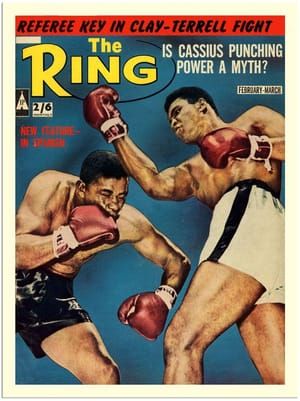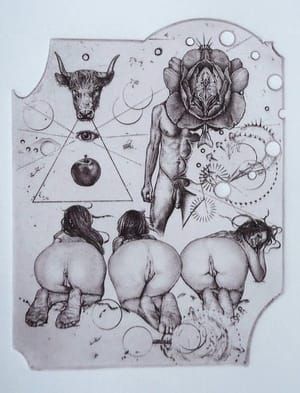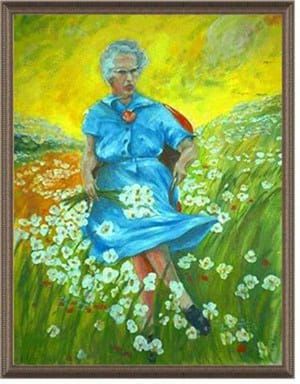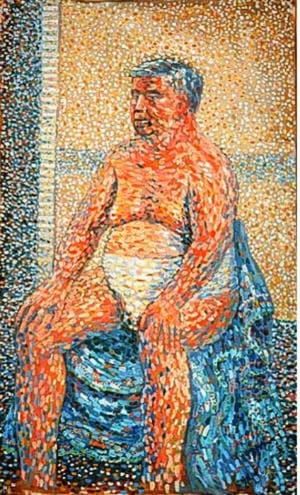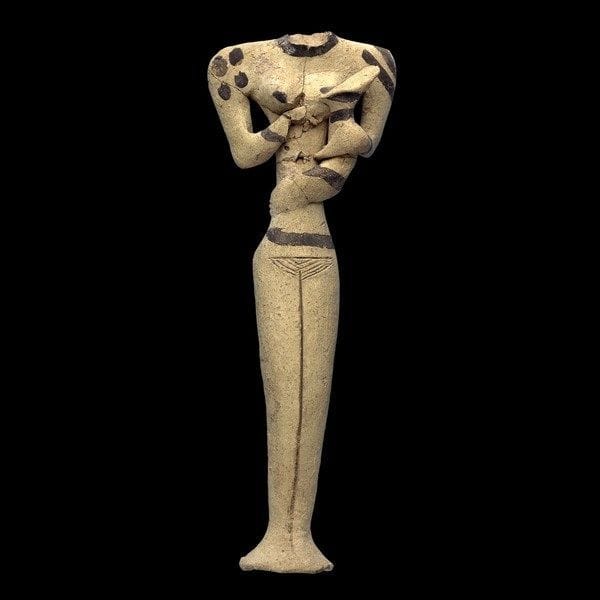

Ubaid “Ophidian” Figurine of Mother Nursing Child
Unknown
Ubaid “Ophidian” Figurine of Mother Nursing Child. 4500 BC
Figurines, Lizard-headed or Ubaid Style, clay, Ur (Ubaid culture), 5th millenium BCE, h:13.6 cm From the Ubaid - Southern Mesopotamian Period, 5000 BCE - 4000 BCE - Found in Ur.
The Ubaid culture succeeded the Halaf at the end of the 6th millenium BCE in southern Iraq, then spread throughout Mesopotamia. Ubaid culture is known for painted pottery; large houses of tripartite plan for extended families; and lizard-headed figurines of both male and female gender. Figurines such as the above examples are typical.
The figure on the left holds a baby on her hip and suckles it. The figure on the right has incised stretch marks on her abdomen. It has been suggested that the brown-painted dots and lines represent tattoos, and the clay pellets scarring. It is unknown if the shape of the skulls represents actual head-binding. Similar Lizard-headed figurines have been found at Eridu.
Collon, Dominique.
Ancient Near Eastern Art. Berkeley: University of California Press, 1995, pg 46.
(https://www.bibliotecapleyades.net/sumer_anunnaki/esp_sumer_annunaki14.htm)
Statue of the Lizard Man
In 1955, Leonardo discovered a strange statue of a mother and child in a cemetery in Ur, a human body but with a head resembling the head of the lizard, and cites this pioneering artifact that the inhabitants of the Iraqi slave civilization were in contact with the space objects.
(Google translation of text at https://www.almrsal.com/post/462527)
Uploaded on Nov 3, 2017 by Suzan Hamer
Unknown
artistArthur
Wait what?

